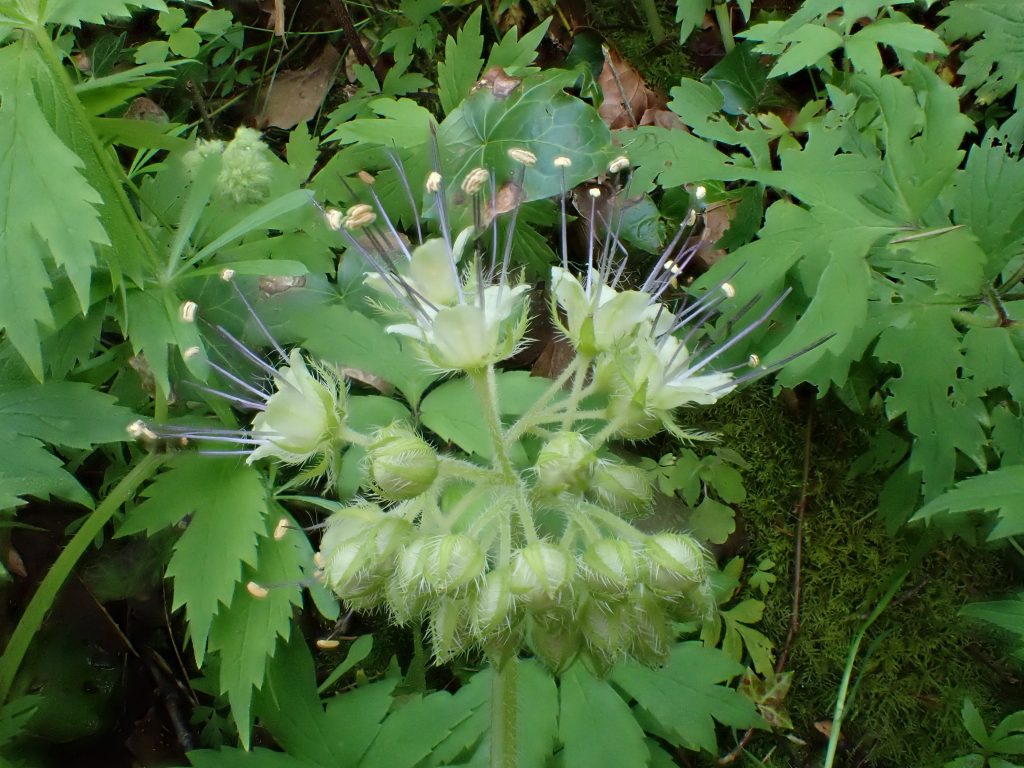
A dozen or so years ago, when I was first trying to identify wildflowers, I was very puzzled by which species of Hydrophyllum (the waterleafs, in the family Hydrophyllaceae) I was commonly finding. I didn’t have a key, and I was so botanically green that I might not have been able to use it anyway. The books I was using didn’t compare the species, and I didn’t understand the difference between these compound leaves vs simple leaves, so I didn’t understand how to measure them to determine whether the leaves were quite a bit longer than wide, or barely longer than wide. So, for the last decade+, I’ve just called them all waterleafs.
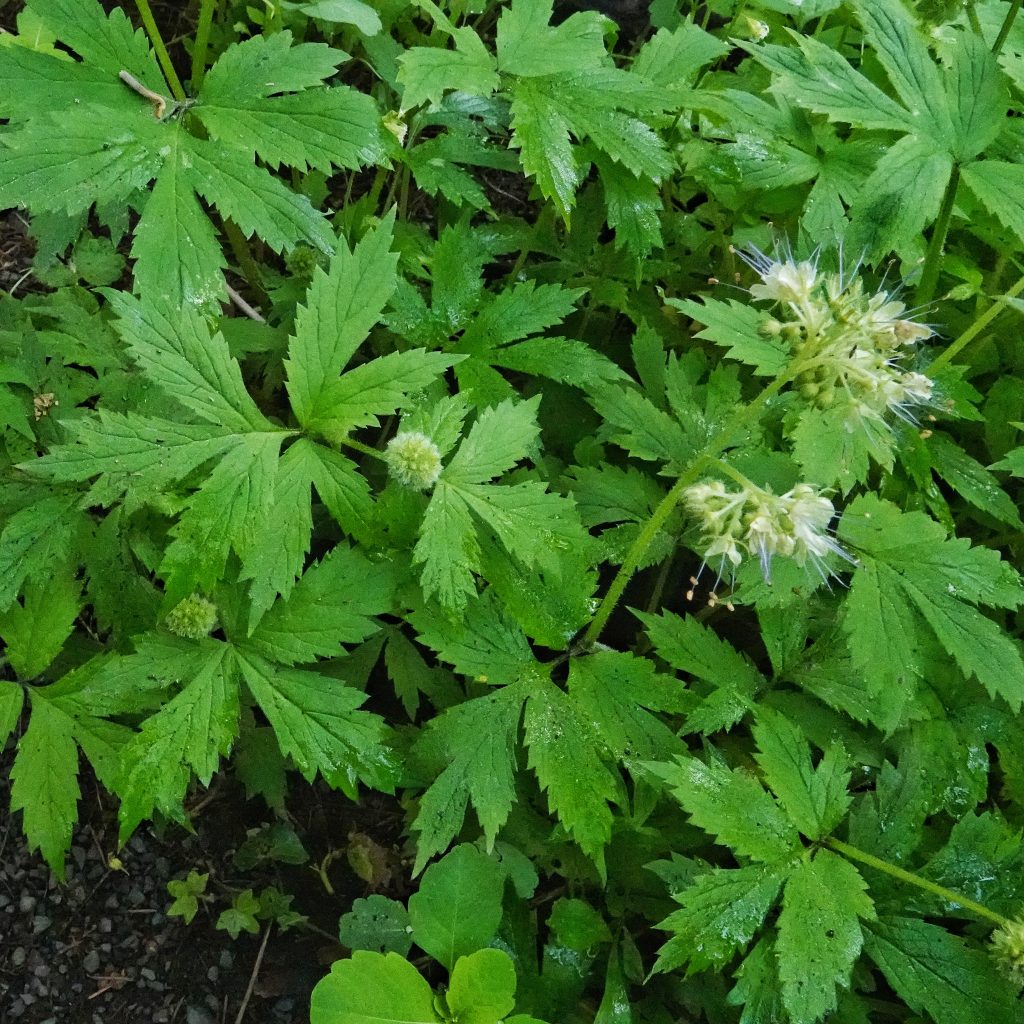
But on the first of three recent trips to the Lacamas Creek Trail in Camas, Washington, I found large quantities of waterleaf, some of which was in bloom, and I became dissatisfied with just giving them a generic label. The next afternoon, armed with the 2nd edition of Hitchcock’s ’Flora of the Pacific Northwest’ (2018), and Eugene Kozloff’s ‘Plants of Western Oregon, Washington & British Columbia’ (2005) (I’d have taken ‘Flora of Oregon’ except Hydrophyllaceae will be covered in Vol 3, which is not out yet), as well as several field guides, I headed back, determined to solve this mystery.
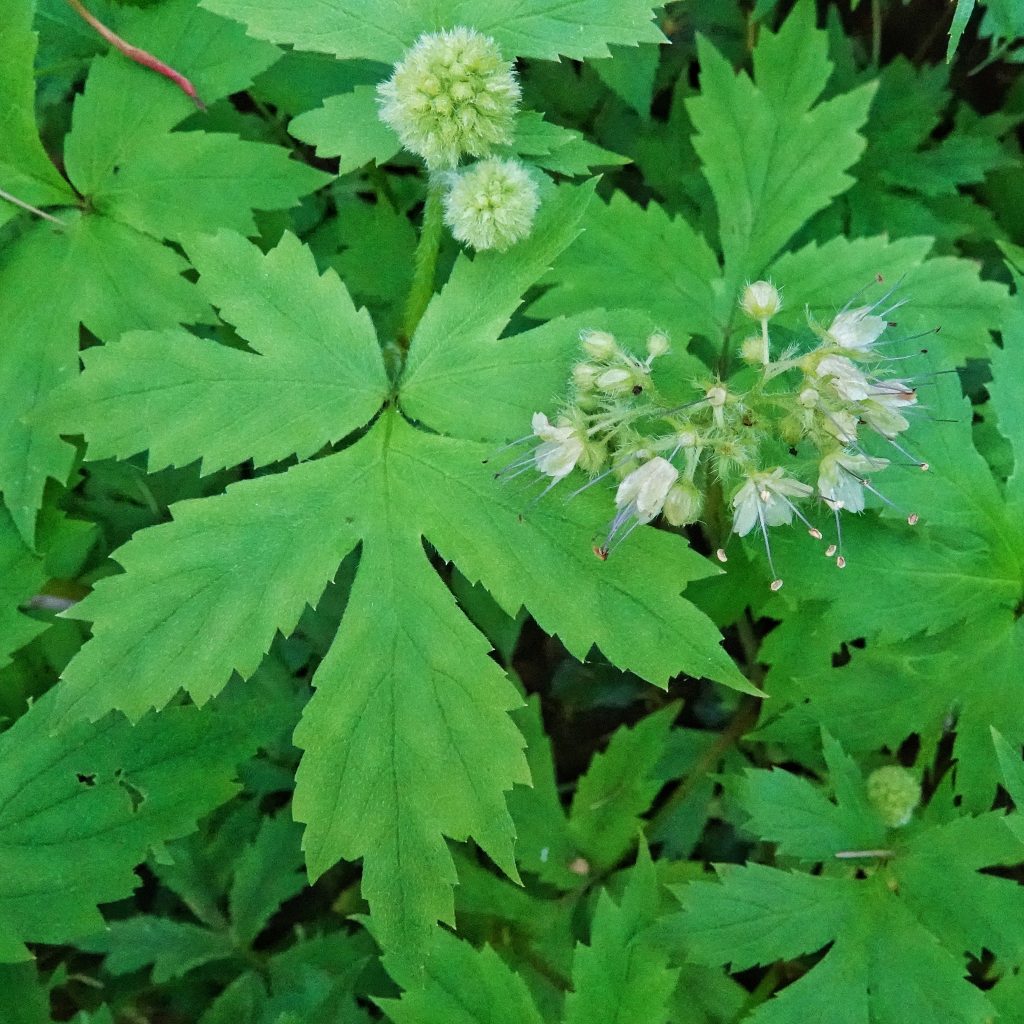
Which turned out not to be much of a mystery at all, since Hydrophyllum tenuipes (Pacific waterleaf) is the only one of our Hydrophyllum spp. that has stamens that are noticeably more than twice as long as the petals (which taken together constitute the corolla), and the stamens on these flowers fit the bill. Distinguishing between the other 4 waterleafs in our region is a little trickier, and I’ll save that discussion for when I find one of them. As in so many situations, good information is key, but the application of that information is just as important, and at any time in at least the last 9 years (since my friend Craig Sondergaard gave me an old, beaten up copy of the first edition of Hitchcock) I could have staved off those feelings of being less-than as a recreational naturalist that occurred every time I encountered the massive mats of waterleaf I found every spring, if I had just applied myself to eliminating that particular bit of ignorance.
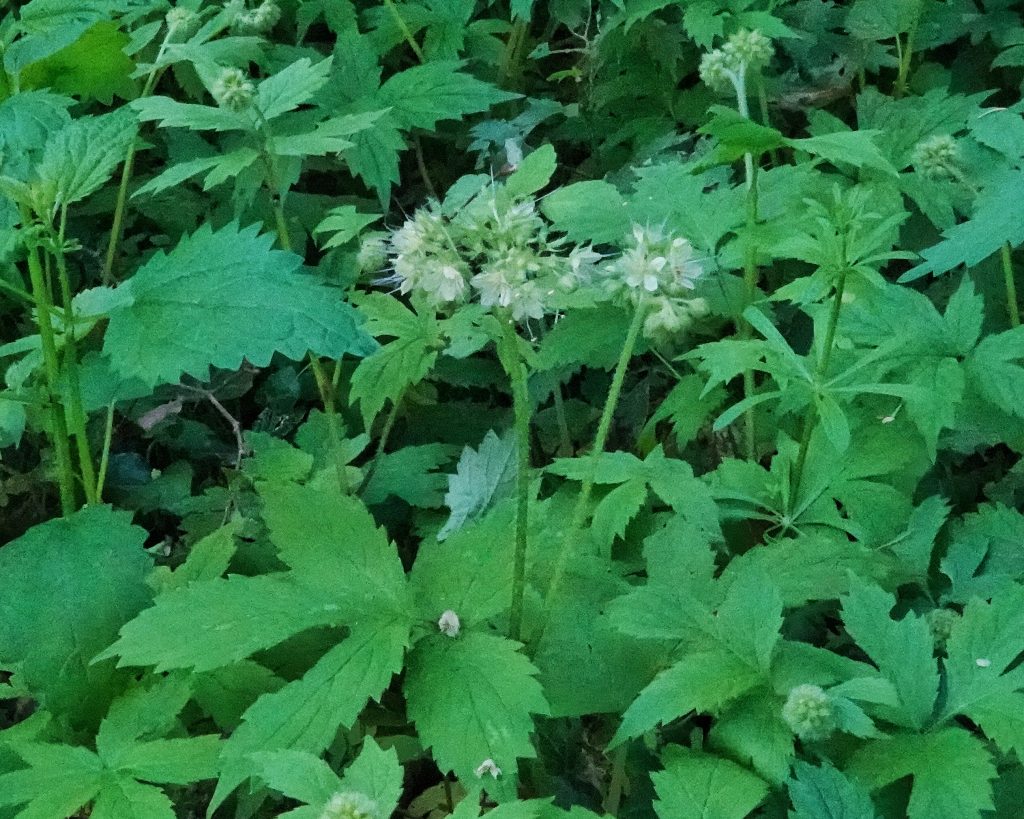
And but knowing the appropriate human generated label for this plant didn’t actually change or add to my appreciation of it. It didn’t become even more aesthetically pleasing than it already was, and the ethnobotanical and ecological relationships information wasn’t significantly different for this species of Hydrophyllum than for the other likely suspects. It just turned out to be satisfying to my ego to pretend I actually knew something concrete about a lifeform that is not actually separate from the environment and relationships in which it exists. And as far as lacking certain knowledge making one feel ‘less than’ as a naturalist, I would quote my good friend, the aforementioned Craig Sondergaard- “I think all you really need as a naturalist is the “wonder”. Wherever and how far that takes you is a fine destination.”
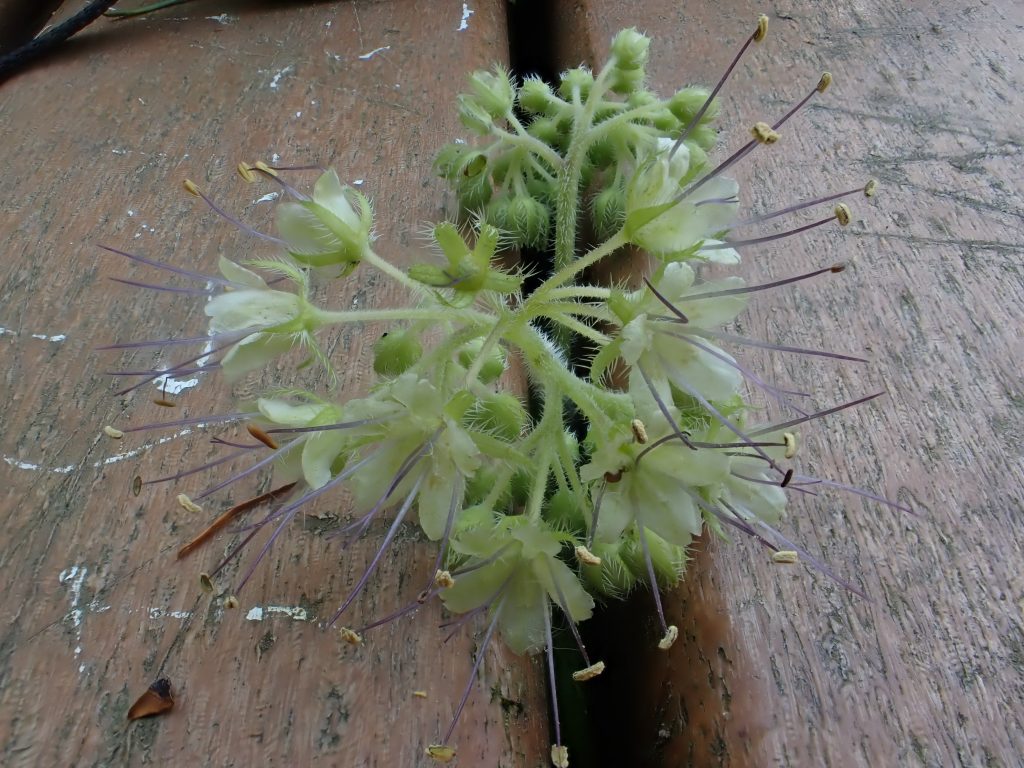
Apparently they are also sought by early season foragers. “Raw, Waterleaf rhizomes have a nice juicy crunch with a bland flavor reminiscent of soil. I set out to separate the leaves from the rhizomes while nibbling along the way, and discovered that the white petioles are even better. They share the same refreshing crunch as the rhizomes but have a cleaner flavor. The rest of the leaf is mild tasting and makes an acceptable addition to a salad, if you don’t mind the fuzzy texture. We steamed Waterleaf greens for 5 minutes and served them with smoked sea salt and were delighted to find the texture and flavor to be strikingly similar to Stinging Nettles. The steamed rhizomes also have a nice flavor and a texture like bok choy. The best flavor is near the growing end of the rhizome where the scales are still white. Towards the base of the rhizome, where the scales and stem are brown, the rhizome assumes a strong flavor and tough, stringy texture. We have eaten Pacific Waterleaf for the last two nights and thoroughly enjoyed the chance to jump-start our wild green season with a passable alternative to Stinging Nettles.” http://arcadianabe.blogspot.com/2012/03/pacific-waterleaf-our-first-spring.html
Ethnobotany-The roots were broken and eaten by people in the Cowlitz tribe, who called this plant tci’tkwalo’h or xotxo’ts.
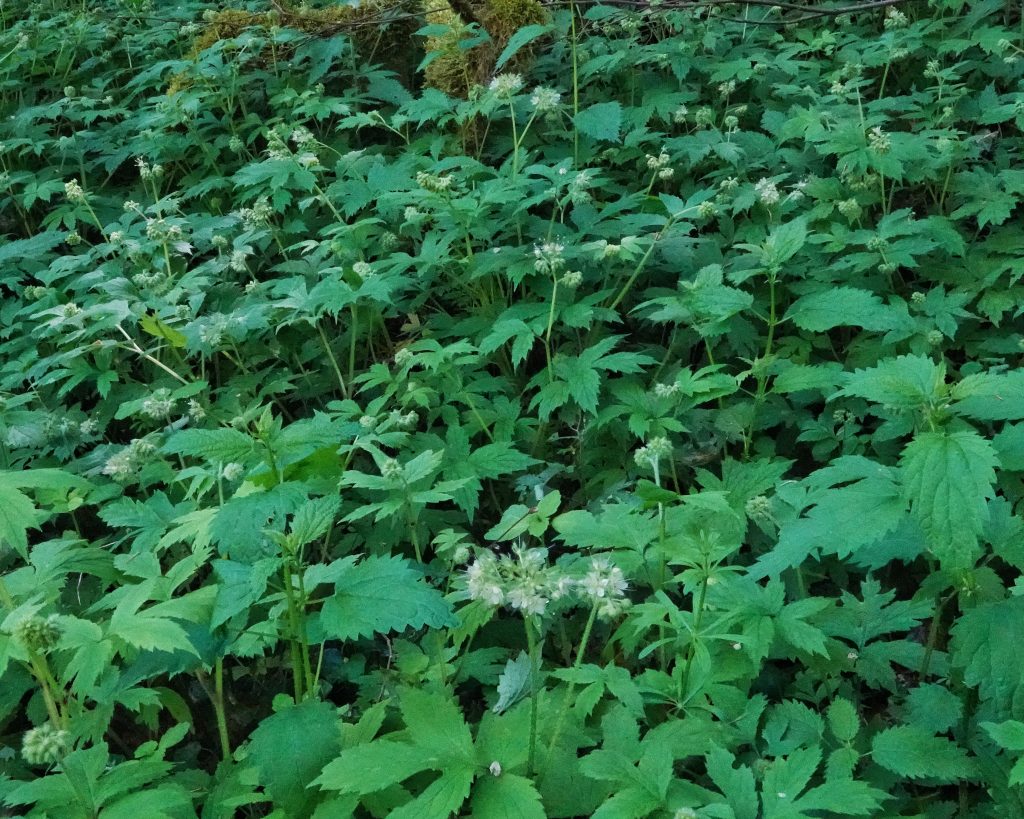
Description-Low growing plant (1-2.5’ tall, but usually on the bottom end of that spectrum) with leaves only slightly longer than wide, and stamens more than twice as long as the corollas. “Erect stem with large leaves. Stem with reflexed bristles. Leaves with soft hairs on 2–12 in. petioles, blades oval to round, 3–8 in. wide, divided pinnately to odd number of deeply cut, toothed lobes with sharp points. Flower stalk from upper leaves with numerous flowers in compact clusters. Flowers consist of cream, greenish, lavender, or blue bells, stamens and pistils extending well beyond petals. Sepals bristly along edges. Flower clusters become very lax in seed.” Hydrophyllum tenuipes | Pacific Waterleaf | Wildflowers of the Pacific Northwest
Similar species– Hydrophyllum occidentale, H. capitatum, H. alpestre, and H. fendleri have stamens less than twice as long as the corolla, and the leaves of H. fendleri are noticeably longer than wide, while those of H. alpestre are generally untoothed.
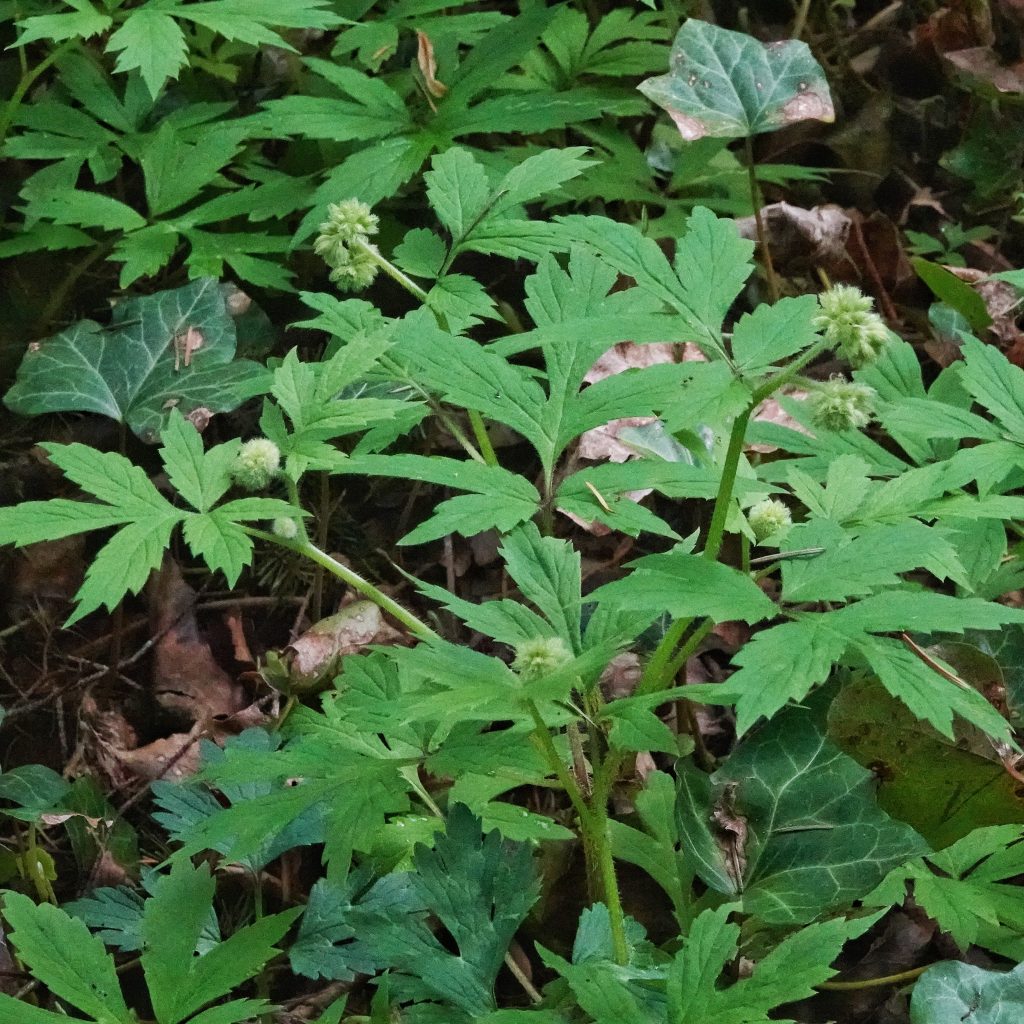
Habitat– Mostly low to mid elevation, shaded forest understory, in rich and usually damp soils.
Range– Native plant found mostly west of the Cascades from s BC through Oregon, as well as in sw Oregon/nw California and the Columbia River Gorge, with scattered, disjunct, low montane populations east of the Cascades.

Reproductive timing– Blooms from late April to July.
Etymology of names– Hydrophyllum is from the Greek words for ‘water’ and ‘leaf’, presumably because members of this genus are usually found in damp soil. The specific epithet tenuipes is from the Latin words for ‘slender’ and ‘foot’, and may reference the abundant and thin rhizomes, or the long, thin stamens, but I cannot positively determine to what that refers.
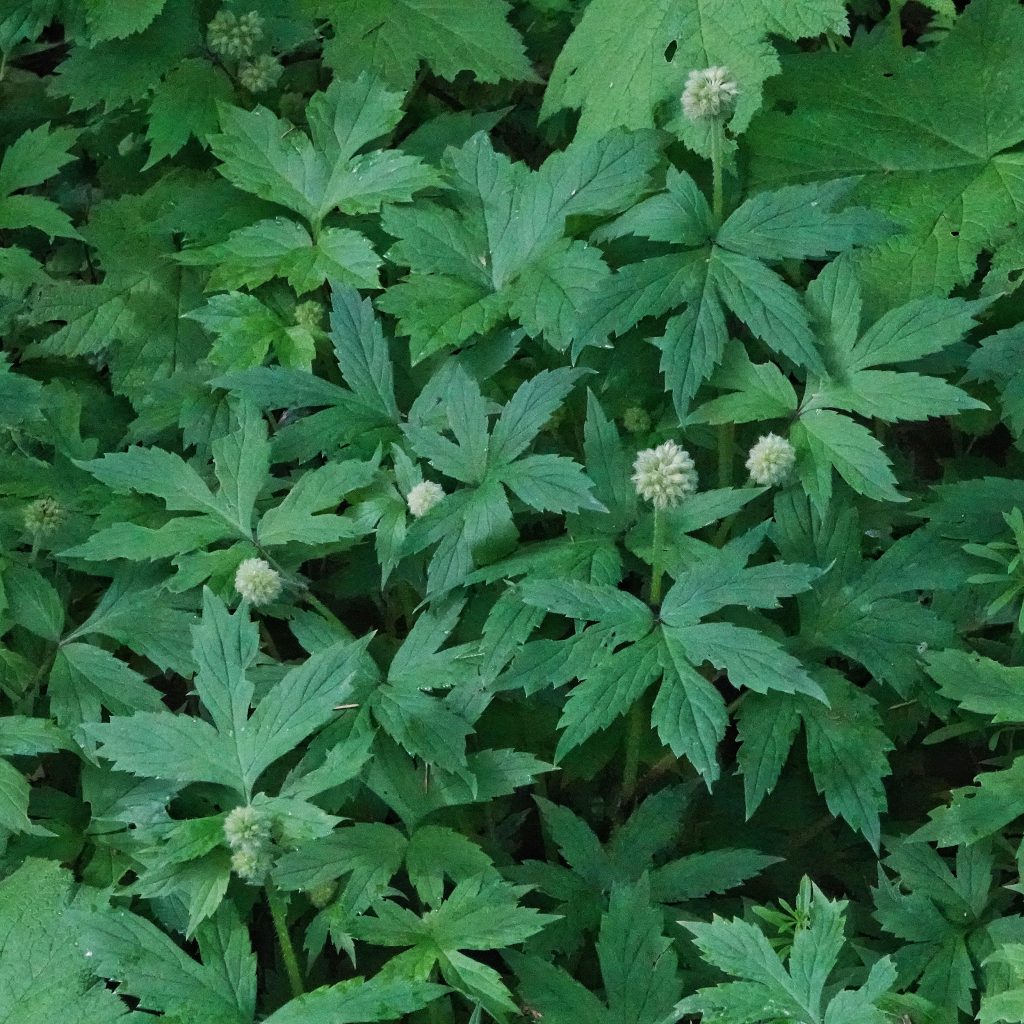
Eaten by– Apparently consumed by various herbivorous mammals, but I can’t seem to ascertain which ones; larval host for the leaf mining flies Agromyza idaeiana, and some in the genus Phytomyza; the leaf beetle Hemiglyptus basalis probably feeds on this species, since they are said to feed on many members of the family Phyllaceae; bees and some lepidoptera consume the nectar and pollinate the plants.
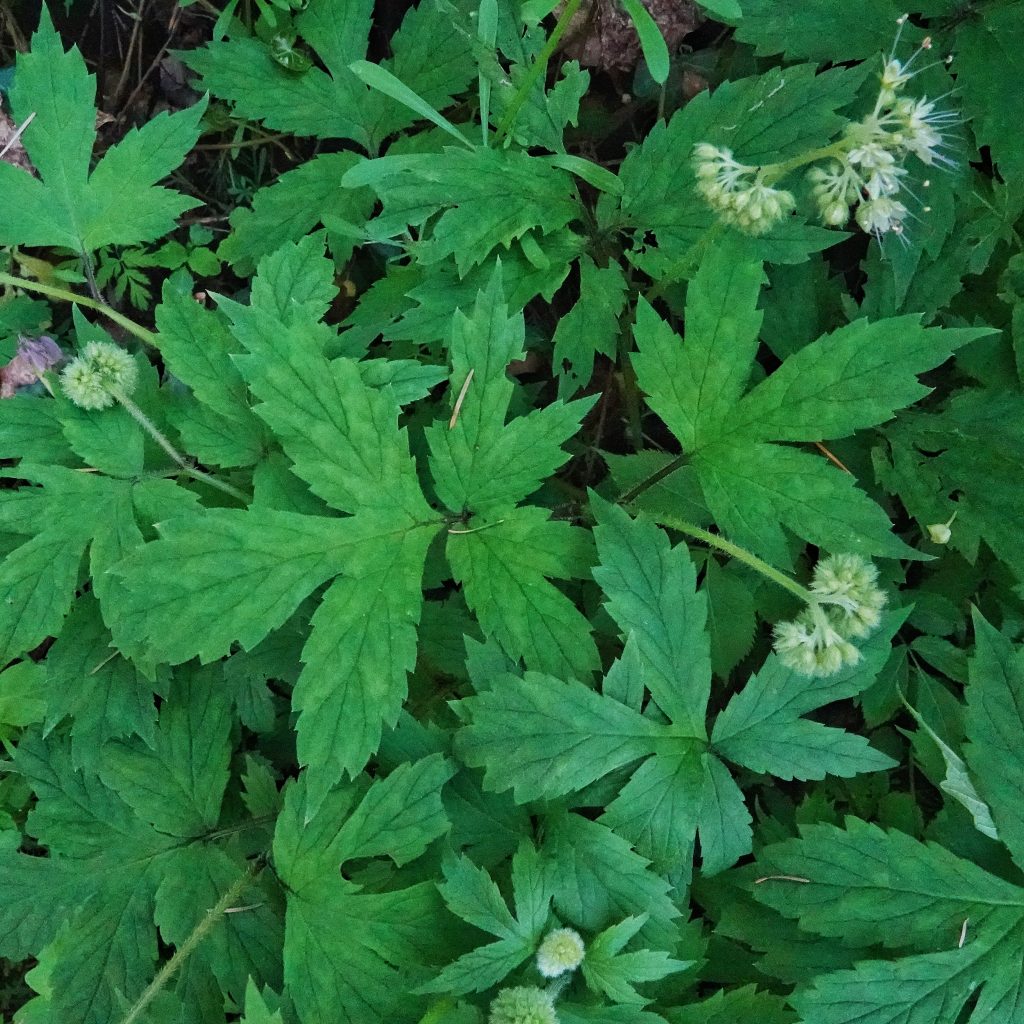
E-Flora BC: Electronic Atlas of the Flora of BC
BRIT – Native American Ethnobotany Database
Hydrophyllum tenuipes – Burke Herbarium Image Collection
https://darkwing.uoregon.edu/~ecostudy/elp/hendricks/pdf_files/hydrophyllum_tenuipes.pdf
Species (common name, Latin name)
Pacific Waterleaf – Hydrophyllum tenuipes – PNW Plants
Pacific Waterleaf, Hydrophyllum tenuipes
Pacific, Virginia and Western Waterleafs – 3 Great Wild Native Vegetables
http://arcadianabe.blogspot.com/2012/03/pacific-waterleaf-our-first-spring.html
Hydrophyllum tenuipes | Pacific Waterleaf | Wildflowers of the Pacific Northwest
https://en.wikipedia.org/wiki/Hydrophyllum_tenuipes
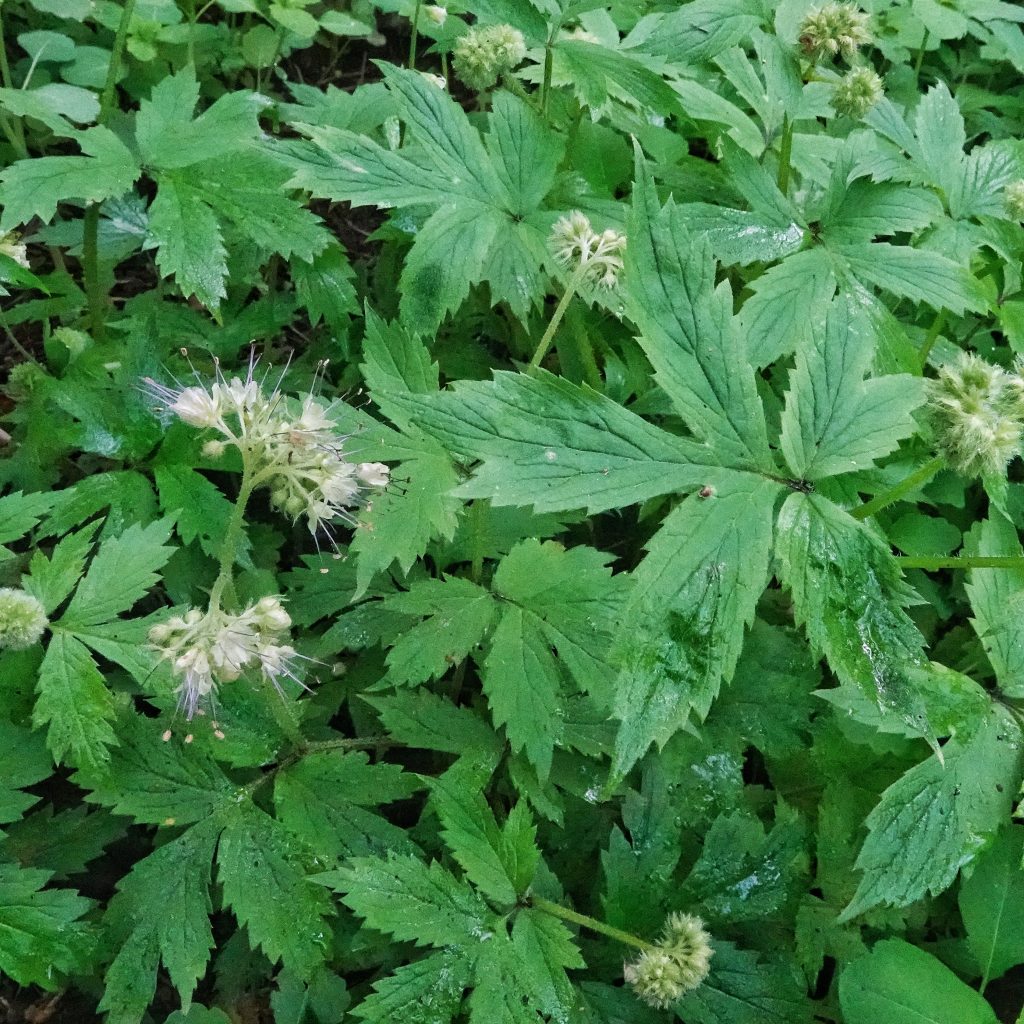
Thank you for this article. It was the best Pacific waterleaf article I could find. I appreciate the information about the Pacific waterleaf being the only one with stamens 2x+ more than the petals. This was so helpful and I am surprised other articles I read did not even bother mentioning that very important difference.
Thanks for your appreciation, E Bon! I’m glad to hear you found it useful!